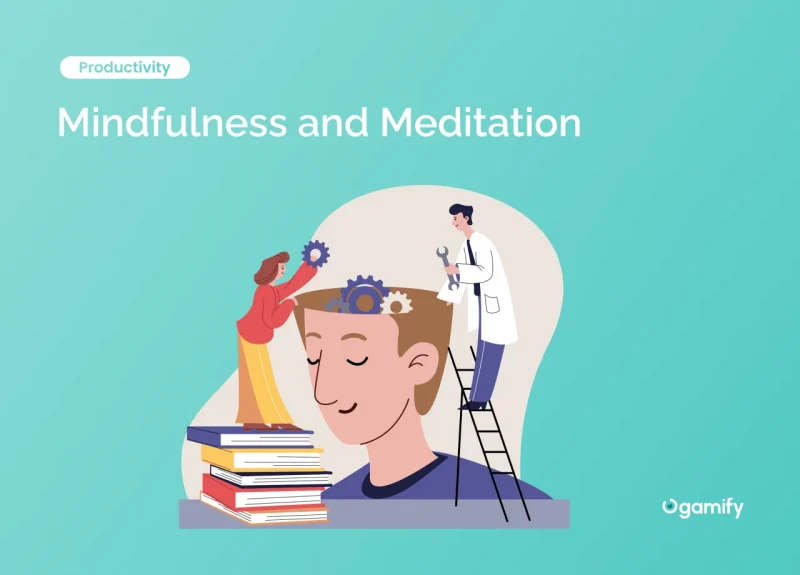The demands of modern work can be overwhelming, leaving us feeling stressed and exhausted. But what if there was a way to stay focused, reduce stress, and increase productivity? The answer lies in mindfulness and meditation.
In this article, we’ll explore the benefits of mindfulness in the workplace and provide practical tips on how to practice mindfulness and meditation. So, whether you want to improve your focus and productivity or reduce stress and anxiety, read on to discover how mindfulness and meditation can help.
What is mindfulness meditation?

Mindfulness meditation has gained popularity recently as people seek ways to manage stress and improve focus and productivity. But what is concentration meditation, and where did this practice originate?
Mindfulness is a mental state of being present at the moment and aware of one’s thoughts and feelings without judgment. Mindfulness meditation is a form of meditation that helps cultivate this state of mindfulness through various techniques such as focusing on the breath, body scan, and guided meditation. This practice has roots in Buddhism and has been used for centuries as a way to cultivate awareness and compassion.
Today, mindfulness techniques are widely used in the workplace, with many companies offering workplace mindfulness programs to help employees reduce stress, increase creativity and efficiency formula, and improve overall well-being. The best meditation for focus and concentration can include desk meditation, headspace for work, and guided meditation at work sessions in the office.
To start a mindfulness practice there are various ways to practice mindfulness, including morning meditation for focus and productivity, guided meditation for workplace motivation, and mindfulness techniques for concentration and focus. Implementing mindfulness in business can be as simple as offering guided meditation productivity sessions or providing resources for employees to start their mindfulness practice such as productivity tools. Ultimately, practicing mindfulness can lead to a more productive and fulfilling work experience while benefiting overall well-being.
How to increase mindfulness?

When it comes to improving your overall well-being and productivity, increasing your personal mindfulness and practicing mindfulness at work are two essential steps that you can take. Mindfulness is a powerful tool that can help you stay focused, calm, and present at the moment, allowing you to manage stress and distractions more effectively and make better decisions.
Methods of personal mindfulness
Many people are turning to meditation as a way to increase their personal mindfulness. One effective method is meditation for focus, which involves sitting quietly and focusing on your breath or a specific object to help clear your mind and increase concentration. This practice can help reduce stress and increase personal mindfulness.
Meditation and stress relief go hand in hand. Incorporating mindful techniques into your daily routine, such as practicing deep breathing or stretching breaks, can help reduce stress and increase personal mindfulness. Moreover, meditation and creativity are interconnected, and mindfulness can enhance creativity by allowing you to access your inner thoughts and ideas. Practising meditation to help focus can help boost your imagination and problem-solving abilities.
To increase productivity, incorporating morning meditation for productivity and focus into your routine can help set the tone for an efficient day. Starting the day with a guided meditation for motivation can help clear your mind, boost your energy levels, and increase your focus. Additionally, many other ways to incorporate mindfulness into your daily life exist. For example, taking short mindful breaks throughout the day, such as practising mindfulness while drinking your morning coffee or tea, can help improve your overall well-being and increase productivity.
If you are wondering how to start a mindfulness practice, many resources are available to help you get started. You can begin with a simple guided meditation for concentration or try a mindfulness app that offers a variety of guided meditations and mindfulness exercises. Another option is to attend a meditation or mindfulness workshop or retreat. These experiences can provide an immersive learning environment to develop your mindfulness practice and learn from experienced practitioners.
Using mindfulness at work

Incorporating mindfulness for businesses can have a positive impact on both employees and the organization as a whole. Mindfulness can help reduce pressure, increase focus and productivity, improve communication, and promote overall well-being. Here are some ways to incorporate mindfulness into the workplace:
Mindful Meditation
Encourage employees to take breaks and meditate at work. This can be done individually or as a group. Meditation has been shown to reduce stress and anxiety, improve focus and cognitive function, and promote emotional regulation.
Mindful Breathing
Encourage employees to focus on their breathing for a few minutes each day. This can be done at the beginning or end of a meeting or during a break. Mindful breathing can help reduce stress and promote a sense of calm and well-being.
Mindful Eating
Encourage employees to be present and mindful while eating. This means taking the time to savour the food and paying attention to how it tastes and feels in the mouth. This can help employees make healthier choices, reduce overeating, and improve digestion.
Mindful Communication
Encourage employees to be present and mindful during conversations. This means listening attentively, being present at the moment, and responding thoughtfully. Mindful communication can help improve relationships, reduce conflict, and increase understanding.
Mindful Environment
Create a mindful environment in the workplace. This means creating a space that is calm and conducive to mindfulness practices. This can include having plants, natural lighting, and calming colours in the workspace.
Why is mindfulness and meditation important in the workplace?

Benefits of a mindful workplace
Why practice mindfulness? The answer is that mindfulness entails being fully present and engaged in the moment without judgment. Although it has gained popularity in improving mental health and well-being, it also offers numerous benefits in the workplace.
Increased focus and productivity
Staying focused is a crucial skill in the modern workplace, where employees are often bombarded with constant distractions, such as emails, phone calls, and social media notifications. Mindfulness offers a solution to this problem by providing employees with tools and techniques that they can use to maintain their centre and attention on their work. By practising mindfulness, employees can develop the ability to stay present at the moment and avoid getting sidetracked by external stimuli.
Mindfulness can help employees develop greater self-awareness, improving focus and productivity. By becoming more aware of their thoughts, emotions, and bodily sensations, employees can learn to recognize when they are becoming distracted and take steps to refocus their attention on their work. This increased self-awareness can also help employees identify any underlying issues affecting their ability to focus, such as fatigue or burnout, and take steps to address them.
Improved communication
Another benefit of mindfulness for companies is improving communication and teamwork. When employees communicate clearly and respectfully, they are more likely to collaborate effectively and achieve their goals.
Mindfulness helps to cultivate empathy and compassion, which can improve relationships between coworkers and foster a more supportive work culture. People who feel supported tend to be more productive and work better as a team.
Help with stress management
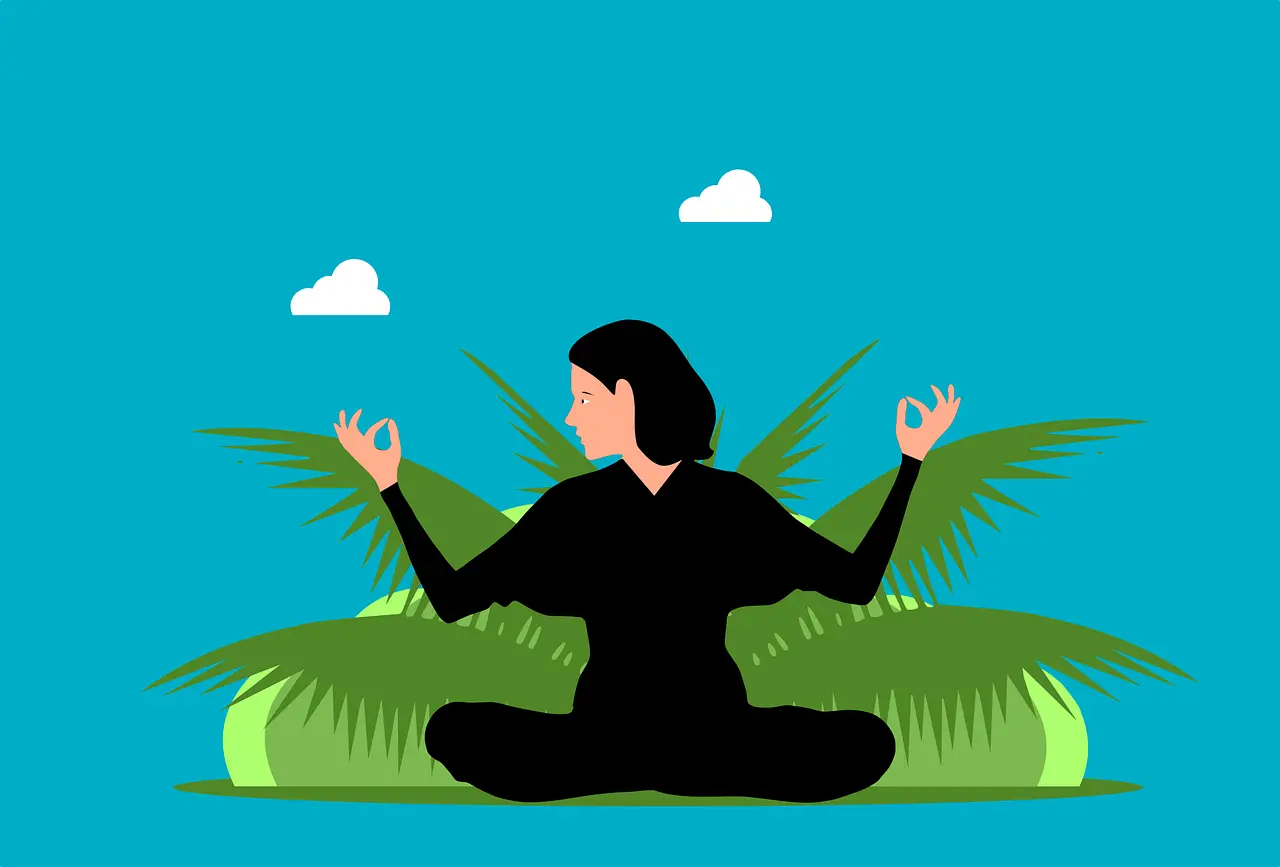
One of the critical ways that mindfulness can increase focus and productivity is by reducing pressure and anxiety. Employees feeling stressed or anxious are more likely to become distracted and have difficulty concentrating on their work. Mindfulness practices, such as deep breathing and body scanning, can help to reduce pressure and anxiety, allowing employees to remain focused on their tasks.
When employees recognize and manage their stress levels, they are less likely to become overwhelmed and more likely to cope healthily with challenges. This can lead to improved job satisfaction, increased motivation, and a lower risk of burnout.
Improve creativity
Mindfulness and creativity can also help to improve innovation in the workplace. When employees can approach problems with an open and curious mindset, they a leading to come up with creative solutions and think outside the box.
Mindfulness also helps cultivate a sense of openness and flexibility, leading to a more dynamic and adaptable work environment. This can be particularly beneficial in industries that require a lot of innovation and creativity, such as technology and design.
Improve overall well-being

Finally, mindfulness can help to improve overall well-being in the workplace. When employees can manage their pressure levels, communicate effectively, and approach challenges positively, they are more likely to feel fulfilled and satisfied. This can lead to better job performance, increased job satisfaction, and a positive work culture overall.
Workplace meditation has many benefits, including increased focus and productivity, improved communication and teamwork, better stress management, enhanced creativity and innovation, and improved overall well-being. By incorporating mindfulness practices into the workplace, employers can create a more positive and productive work environment for their employees.
Why is a mindfulness approach important for employees?
When a workplace fails to incorporate mindfulness practices, it can have negative consequences for employees. Without mindfulness, employees may find themselves in an environment that is characterized by heightened levels of stress and competition. This can have a detrimental impact on their overall well-being, as well as their productivity.
Over time, the absence of mindfulness practices can lead to further negative outcomes, including sleep deprivation and chronic stress. Employees who experience chronic stress may find it increasingly difficult to manage their workload and responsibilities, which can lead to decreased job satisfaction and even burnout. Burnout is a serious condition that can have long-term effects on an individual’s mental and physical health, as well as their career.
It is therefore essential for businesses to prioritize mindfulness practices in the workplace. By providing employees with opportunities to engage in mindfulness exercises and techniques, businesses can create a more positive and supportive work environment. This, in turn, can lead to increased job satisfaction, improved productivity, and reduced turnover rates.
How to implement mindfulness in the workplace?
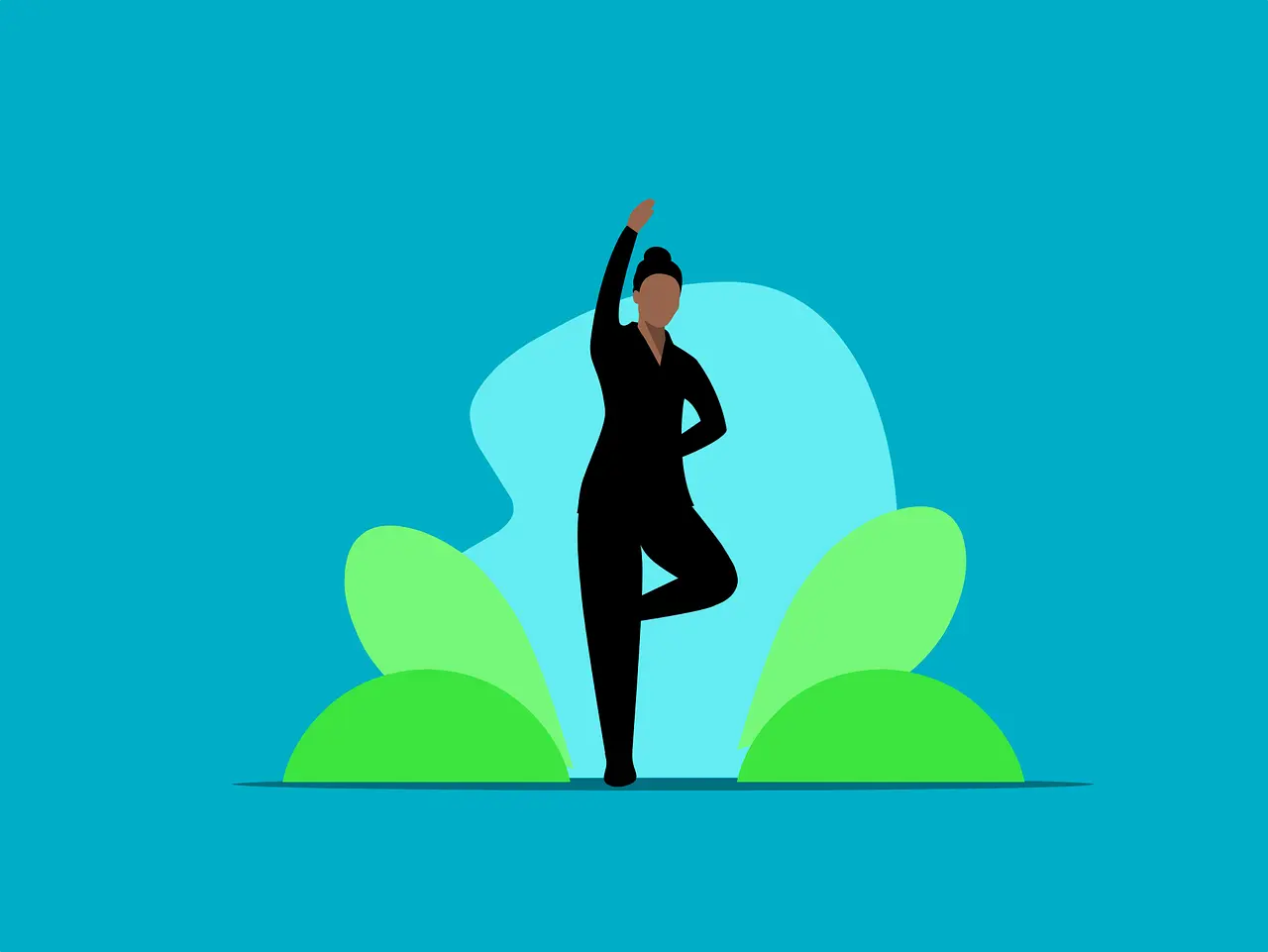
As you know how mindfulness can be integrated into an organization, you may wonder how to effectively introduce these methods to your employees and encourage them to utilize them. One potential solution could be to implement a gamification system.
By incorporating game-like elements into non-game contexts, gamification can effectively motivate individuals using the exact mechanisms that drive their engagement with games. This approach may be an ideal way to encourage team members to incorporate mindfulness practices into their daily lives while also making the process enjoyable and engaging. It is advisable to incorporate mindfulness practices to enhance your weekly planning experience and ensure everyone can carve out a few minutes each day for added enjoyment.
Ogamify example
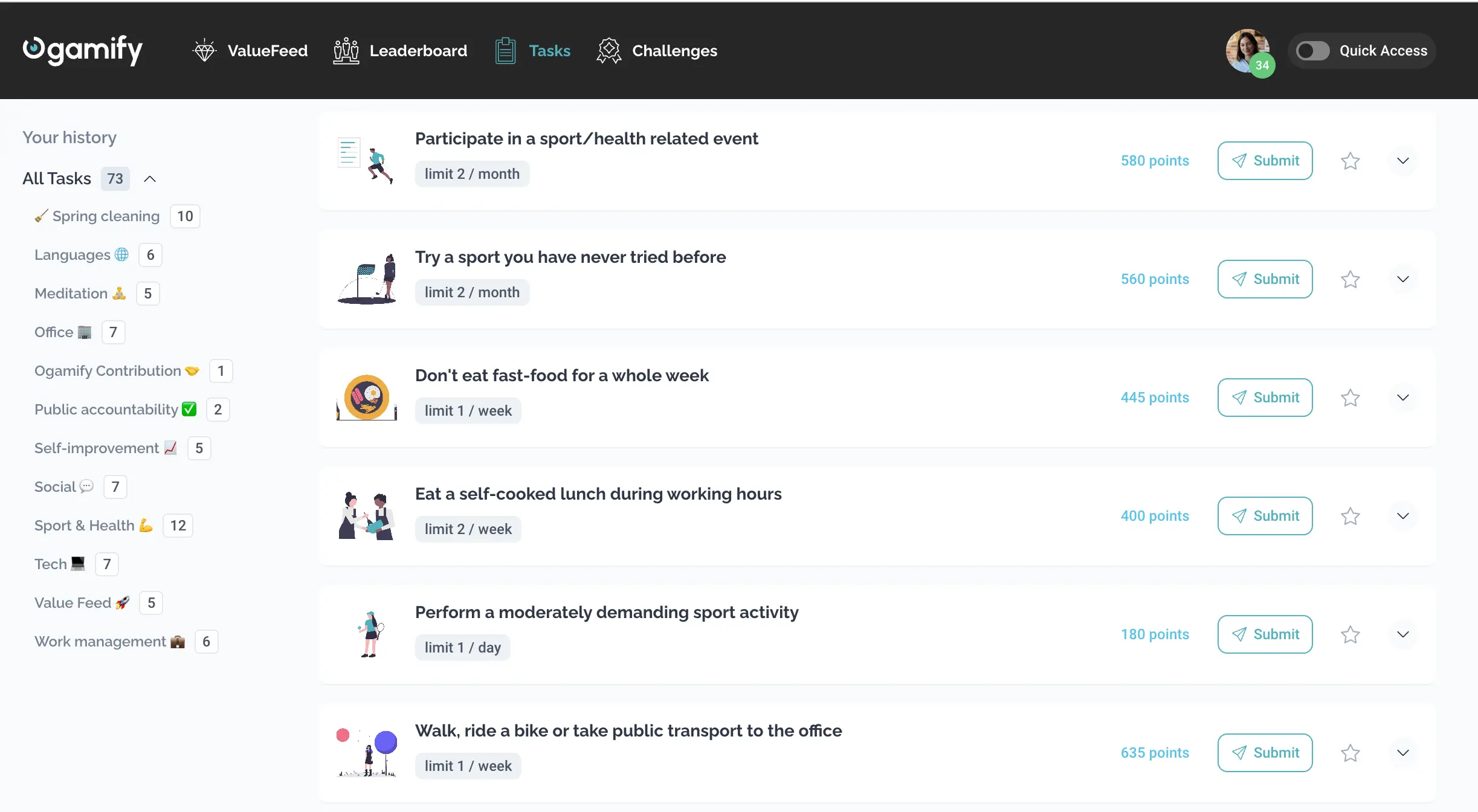
With the help of Ogamify, a workplace gamification app, you can effectively motivate your team members to complete tasks of your choosing. Whether it be engaging in sports or mindfulness activities such as meditation, completing work management-related tasks and more, the platform can be tailored to meet your specific needs. By leveraging the power of gamification, you can encourage your employees to be more efficient and achieve their goals.
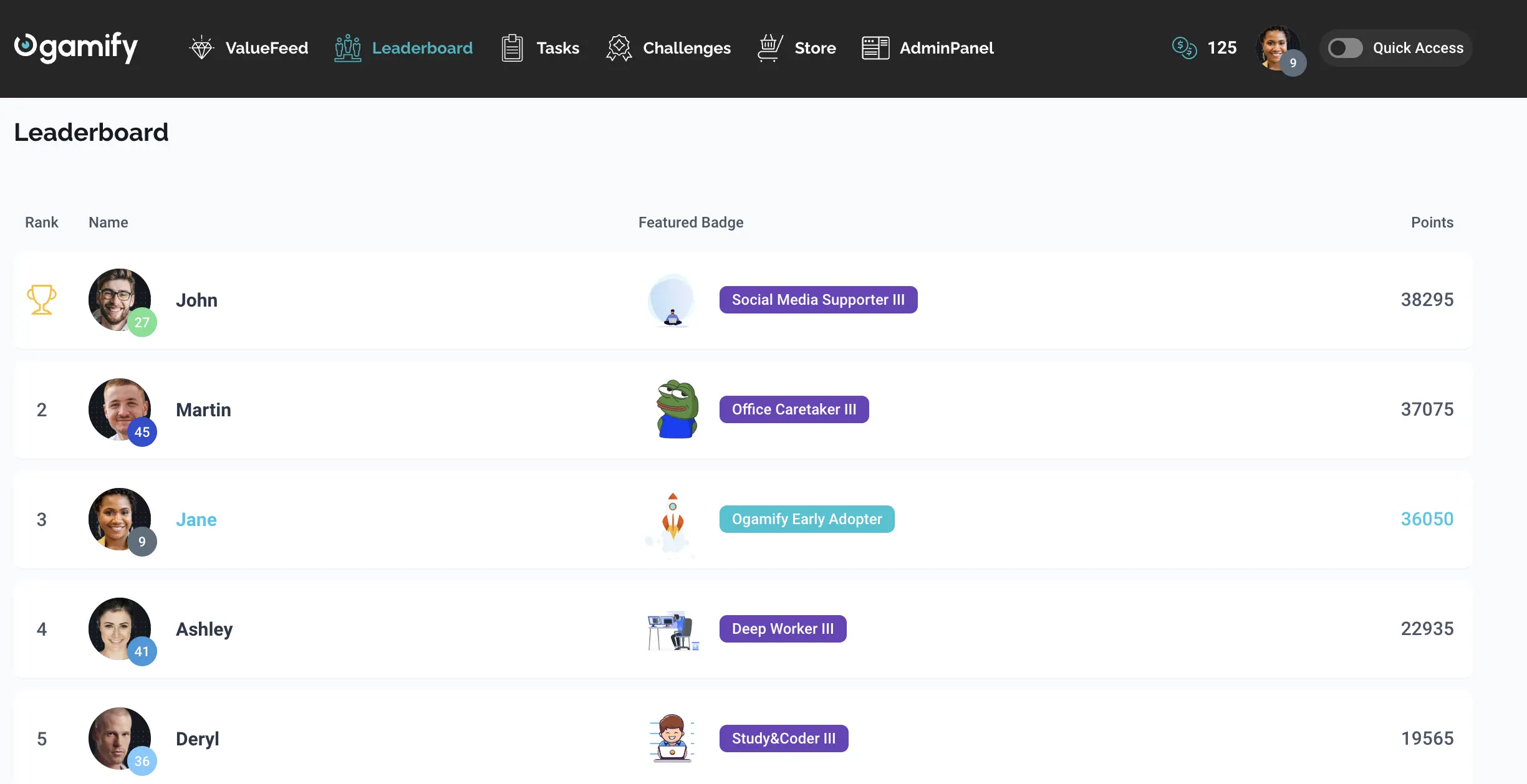
Initially, introducing mindfulness techniques into your company’s daily routine may seem like a daunting challenge. The process involves not only changing the culture of the organization but also transforming the way people function daily. However, fear not! There are ways to make this transition smoother and more enjoyable for everyone involved.
One highly effective method is through the use of gamification. You can engage your employees fun and interactively by incorporating leaderboards, badges, points, and other game-like elements. This approach helps them develop new habits and promotes a positive and supportive company culture.
So, why not let your people play and grow? By introducing gamification, you can transform your workplace culture into a thriving ecosystem of engaged and motivated individuals committed to personal and organizational growth.
Conclusion
Mindfulness and meditation are powerful tools that can improve focus, reduce stress and anxiety, and increase productivity in the workplace. Mindfulness meditation helps cultivate a state of being present and aware of thoughts and feelings without judgment. Practising mindfulness at work can include desk meditation, headspace for work, and guided meditation in the office.
Incorporating mindfulness into the workplace can have a positive impact on both employees and the organization as a whole. Encouraging employees to engage in mindful meditation, breathing, eating, and communication and creating a mindfulness for focus, productivity, and overall well-being. Implementing mindfulness and productivity practices in the workplace can improve the work experience and contribute to a more fulfilling life.
FAQ
How does mindfulness improve work productivity?
Mindfulness improves work productivity by enhancing focus, reducing stress levels, and promoting emotional well-being. It allows individuals to stay present, avoid distractions, and fully engage in their tasks, resulting in increased efficiency and effectiveness.
Can meditation help with work-related stress?
Yes, meditation is a powerful tool for managing work-related stress. Regular meditation practices have been shown to activate the body’s relaxation response, reducing stress levels and promoting a sense of calm and well-being.
How often should I practice mindfulness and meditation at work?
The frequency of mindfulness and meditation practice will depend on individual preferences and schedules. However, even a few minutes of practice each day can yield significant benefits. Start with short sessions and gradually increase the duration as you become more comfortable with the practice.
Can mindfulness and meditation improve teamwork and collaboration?
Absolutely. Mindfulness and meditation practices enhance emotional intelligence and promote better communication and empathy. By cultivating these qualities, individuals can foster a more collaborative work environment, leading to improved teamwork and overall productivity.
Are there any specific mindfulness techniques recommended for the workplace?
Several mindfulness techniques can be beneficial in the workplace. Deep breathing exercises, body scans, and guided meditation sessions are commonly practiced. Additionally, incorporating short mindfulness breaks throughout the day, where individuals focus on their breath and bring awareness to the present moment, can significantly improve work productivity.
How long does it take to see the effects of mindfulness and meditation on work productivity?
The effects of mindfulness and meditation on work productivity may vary from person to person. Some individuals may experience noticeable improvements within a few weeks, while others may require more time. Consistency and regular practice are key to reaping the long-term benefits of these practices.

